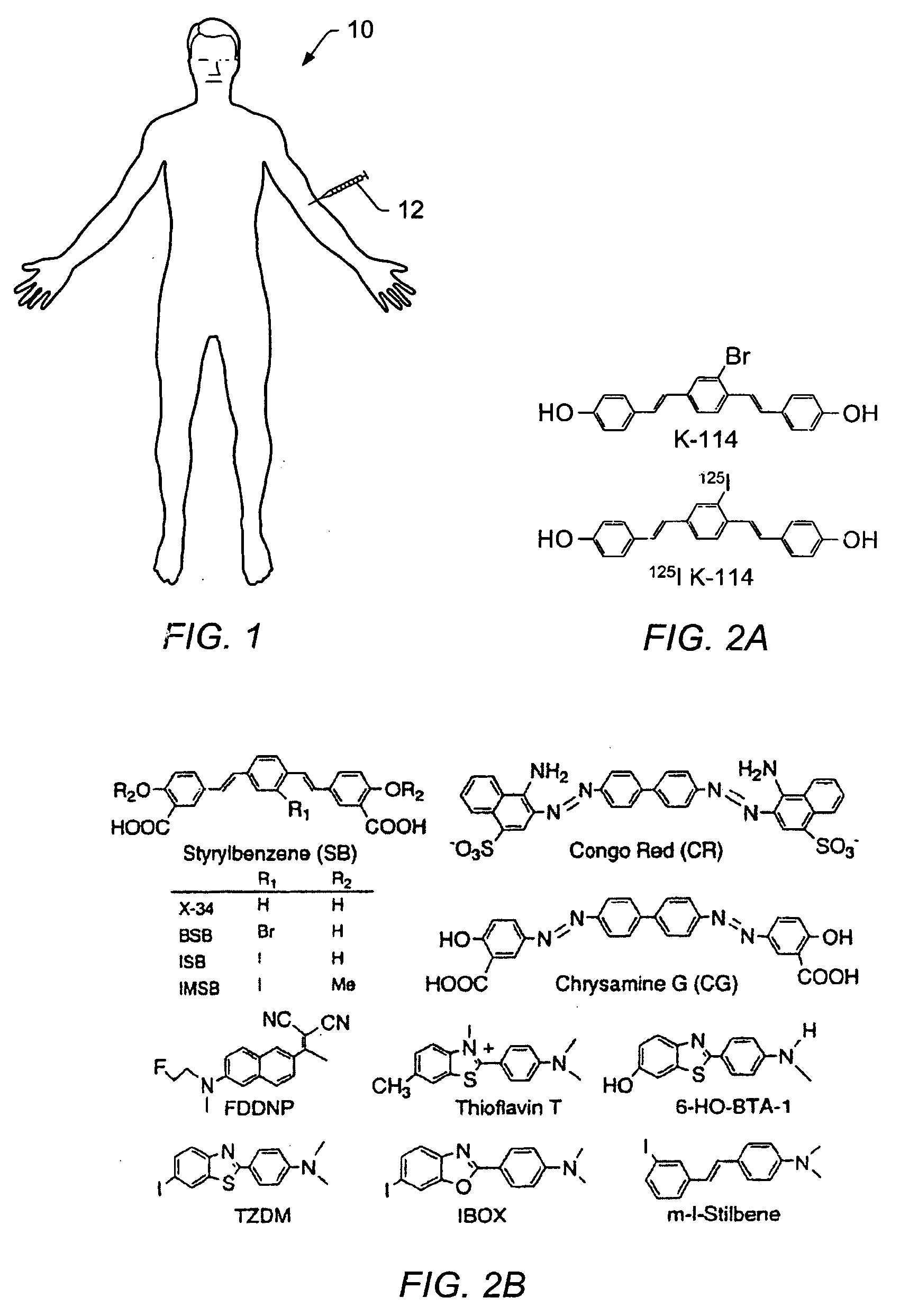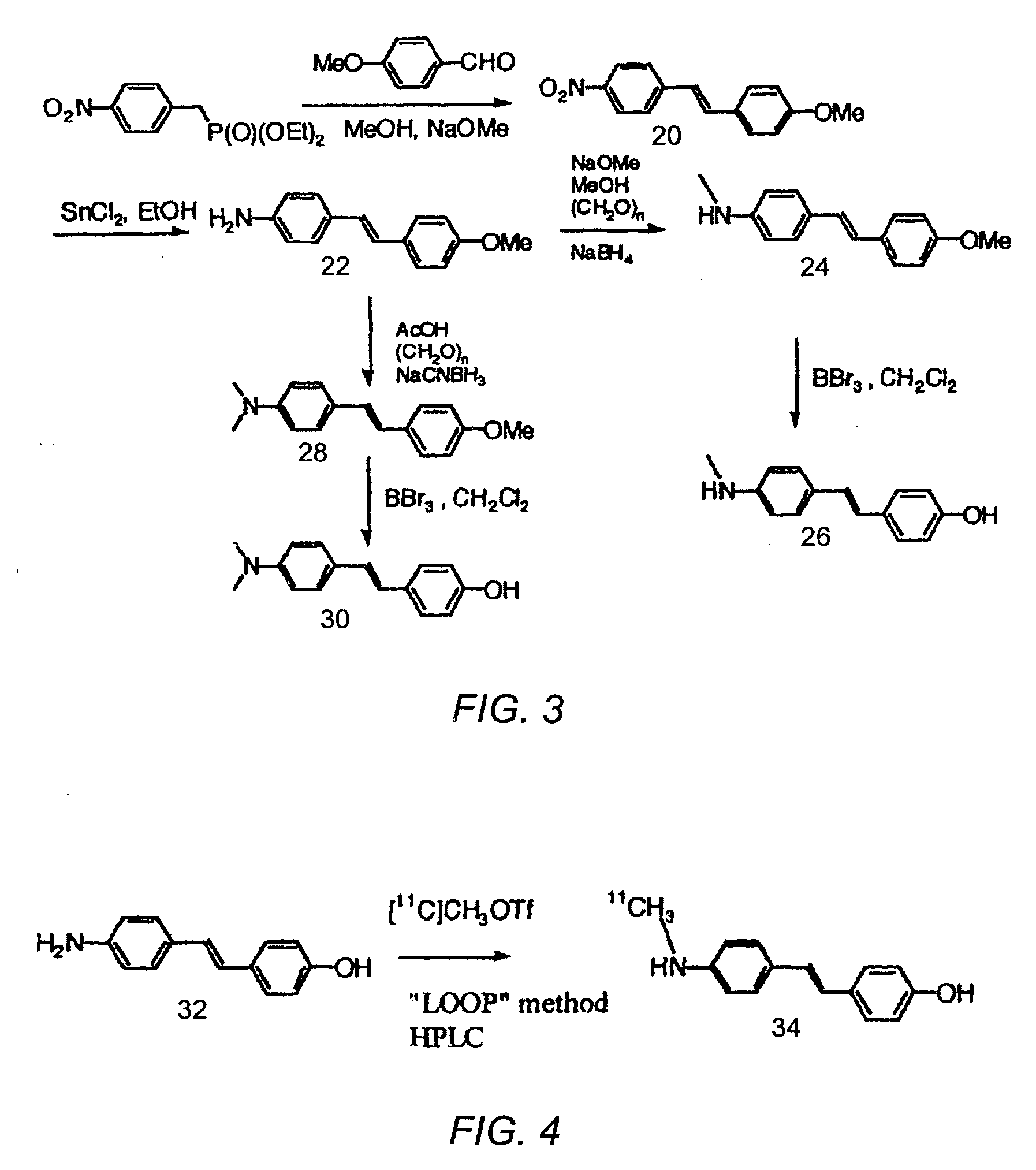In vivo imaging of amyloid plaques in glaucoma using intravenous injectable dyes
a technology of amyloid plaques and dyes, which is applied in the field of in vivo imaging of retinal ganglion cells, can solve the problems of visual field testing, which only detects damage from ocular hypertension or glaucoma, and individual's sight may already be severely damaged
- Summary
- Abstract
- Description
- Claims
- Application Information
AI Technical Summary
Benefits of technology
Problems solved by technology
Method used
Image
Examples
Embodiment Construction
[0022] In vivo imaging of a living animal (e.g., a human) may be used to detect and / or monitor conditions associated with disease in the animal. In certain embodiments, conditions associated with, for example, ocular hypertension may be detected and / or monitored in a living animal through in vivo imaging. Images of the eye of the animal and / or portions of the nervous system proximate to the eye may be used to assess conditions associated with disease in the eye. In certain embodiments, a dye may be injected into the animal to enable typical imaging techniques (e.g., fluorescent angiography, magnetic resonance imaging (MRI), computed tomography (CT), positron emission tomography (PET), single photon emission tomography (SPECT)) to be used for detection and / or monitoring of disease state in the eye of the animal. The dye may bind or attach to certain proteins or plaques of the animal that are indicative of disease within the eye.
[0023]FIG. 1 depicts a schematic of an embodiment for i...
PUM
 Login to View More
Login to View More Abstract
Description
Claims
Application Information
 Login to View More
Login to View More - R&D
- Intellectual Property
- Life Sciences
- Materials
- Tech Scout
- Unparalleled Data Quality
- Higher Quality Content
- 60% Fewer Hallucinations
Browse by: Latest US Patents, China's latest patents, Technical Efficacy Thesaurus, Application Domain, Technology Topic, Popular Technical Reports.
© 2025 PatSnap. All rights reserved.Legal|Privacy policy|Modern Slavery Act Transparency Statement|Sitemap|About US| Contact US: help@patsnap.com



